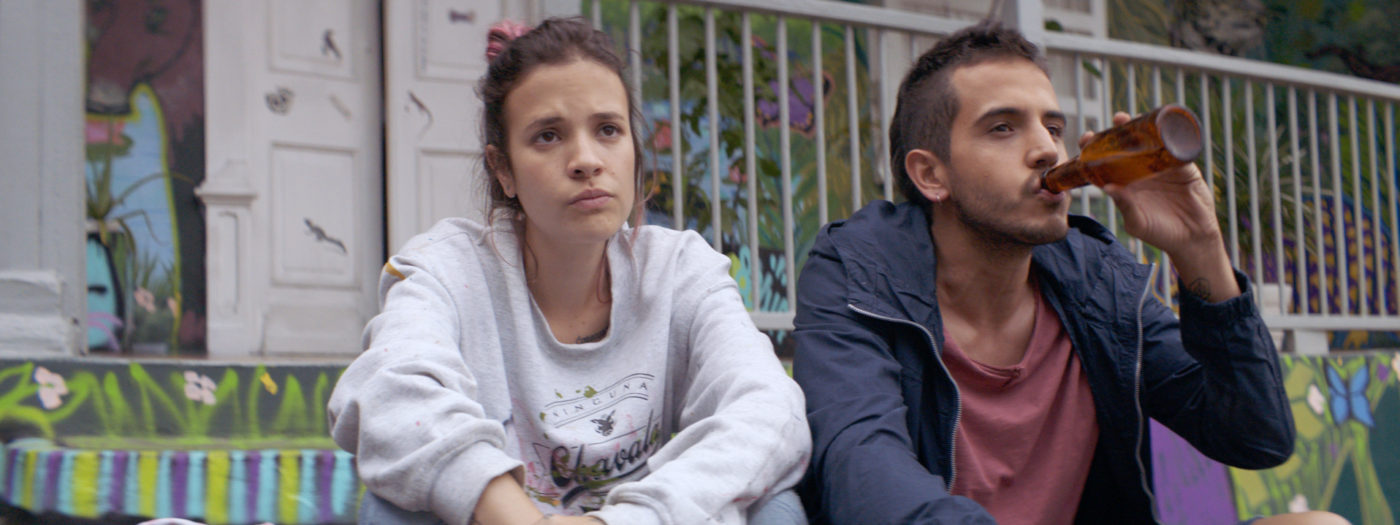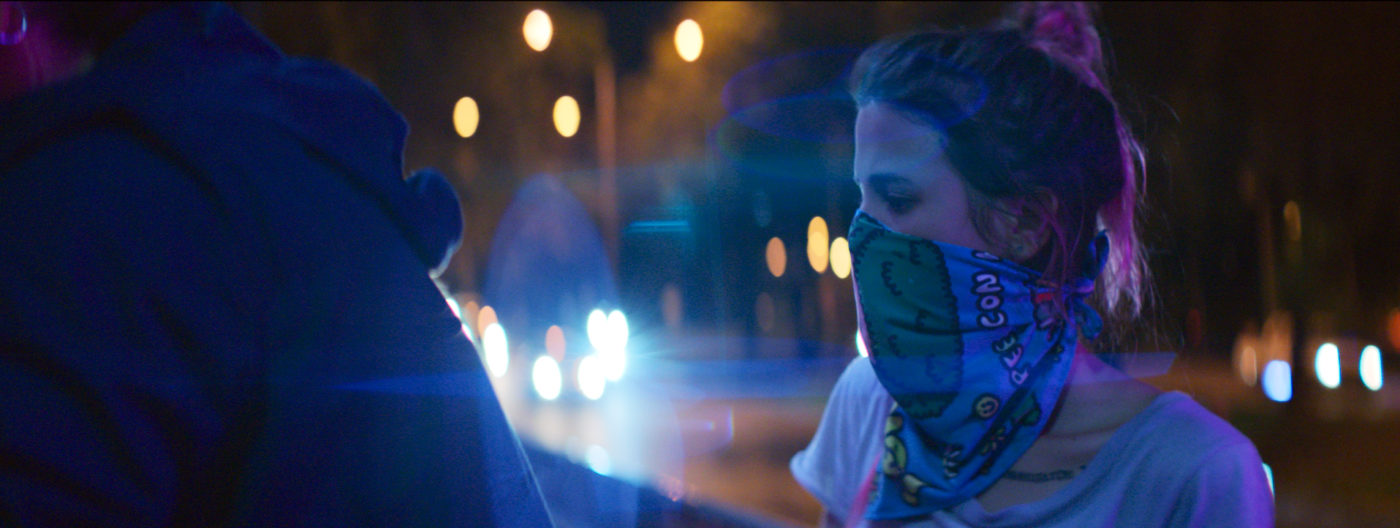Less is more in Catalina Arroyave Restrepo’s feature debut Days of the Whale (Los días de la ballena) which was originally scheduled to premiere in Chicago as part of the, for now, postponed 36th Chicago Latino Film Festival and begins streaming this week in virtual cinemas across the nation. Set in the streets of Medellín, Colombia, its story is almost minimalist, so hyper-focused it is in exploring a specific milieu and a specific moment in the lives of its main characters, graffiti artists Cristina (Laura Tobón) and Simón (David Escallón). It tackles rather obliquely those perennial themes of displacement and violence that hang over most of Colombian cinema like the Damocles’ sword.

Cristina’s mother was forced into exile after receiving a series of death treats for her reporting on local gang activity. Cristina lives with her father Julián (Christian Tappán, best known for his role as DEA agent Willy Rangel in La reina del sur) and her stepmother who is merely a couple of years older than Cristina. It’s an uneasy relationship to say the least. She resents her stepmother; Julián is hands-off, trying to avoid any potential conflict with his daughter and much less his new wife. He knows Cristina still misses her mother. Her mother’s constant pressure on Cristina to join her in Barcelona helps little. Simón, on the other hand, lives with his doting grandmother, his parents’ absence left unexplained by the script. Simón once ran with the gang that is now extorting money from the neighborhood’s businesses and the local arts collective Cristina and Simón belong to. Cristina spends far more time in the streets with Simón than at home or the university finishing her degree. Art and the streets offer both teens a refuge and a huge canvas on which they can express themselves, David Correa’s camera delicately following their hands as they outline and fill with bright colors the graffiti they bring to life all over their neighborhood.
The art collective gets in trouble when they go ahead with the publication of a zine that includes a cartoon critical of the local gang’s extortion practices. The gang retaliates by painting a threat in big letters on a wall across the street from the building housing the collective. Simón advocates for the message to be painted over. Cristina demurs. And as they go back and forth on the idea, this being the crux of the 77-minute film’s second half, what began as a platonic friendship turns into a budding, sometimes awkward, romance between these two collaborators from opposite walks of life. Cristina eventually relents and turns that wall into her magnum opus, one that could be her final piece in Medellín’s streets.
Arroyave Restrepo has a perceptive ear for dialogue and for what makes these young people tick. Cristina and Simón’s two-handers are full of the sweet nothings and teasing we indulged in on our first romances. And this romance is truly sweet, their smiles sometimes disrupted by the unavoidable disagreements, all made totally believable by Tobón’s and Escallón’s raw, lived-in and naturalistic performances. However, this is Cristina’s story more than Simón’s: the film digs deeper at the maelstrom of moods and emotions Cristina feels at every turn, with Tobón instantaneously going from teary-eyed and confused to defiant in one single shot. The camera, on the other hand, may feverishly follow Simón around but at times I had the feeling that his story was being pushed aside even though his character has more to lose.
Violence is always lurking around the corner in Medellín but Arroyave Restrepo smartly keeps the actual acts of violence off-camera, only showing us its horrific and painful consequences. She conveys how language can be used as a weapon, that violence is more than beating somebody to a bloody pulp or shooting that person down. How you express yourself, the tone of voice, the words used are equally dangerous. They are what forced Cristina’s mother into exile and Lucas, the director of the art collective, to pay off the gang. And they are used by Cristina to treat her mother-in-law with contempt and disdain.

Days of the Whale is, above all, a celebration of the liberating, community-building power of art and of art as a tool to resist those forces endangering your life and your community. The film comes truly alive whenever we see these young artists discuss their work or rethink the distribution of that zine or simply create, even if that act of creation involves the deceitfully simple act of painting a wall with a can of spray paint. The camera roams through the art collective’s building, picking up glimpses of activity here and there, or it stands back to see a completed work after peaking into an artist’s notebook. Victor Acevedo’s score and a soundtrack featuring the work of a select group of Medellín’s salsa and hip-hop artists help bring to life that community vibe. We may not get to see Medellín as a whole, but the soundtrack and camerawork gives us a sense of what makes its urban culture tick.
The image of a stranded whale in the canals and even in Medellín’s downtown as metaphor is the film’s weakest spot. Other than to inject a sense of magical realism to the proceedings, the images are forced, gratuitous, unnecessary, an attempt to give meaning to a story that already has plenty of it. A film as deceitfully simple, as vibrantly told as this one, did not need such accoutrements.
Days of the Whale begins streaming today as part of the Gene Siskel Film Center of the School of the Art Institute’s Film Center from Your Sofa program and on July 31st as part of Facets’ virtual cinema program. Both venues will receive 50% of all proceeds.